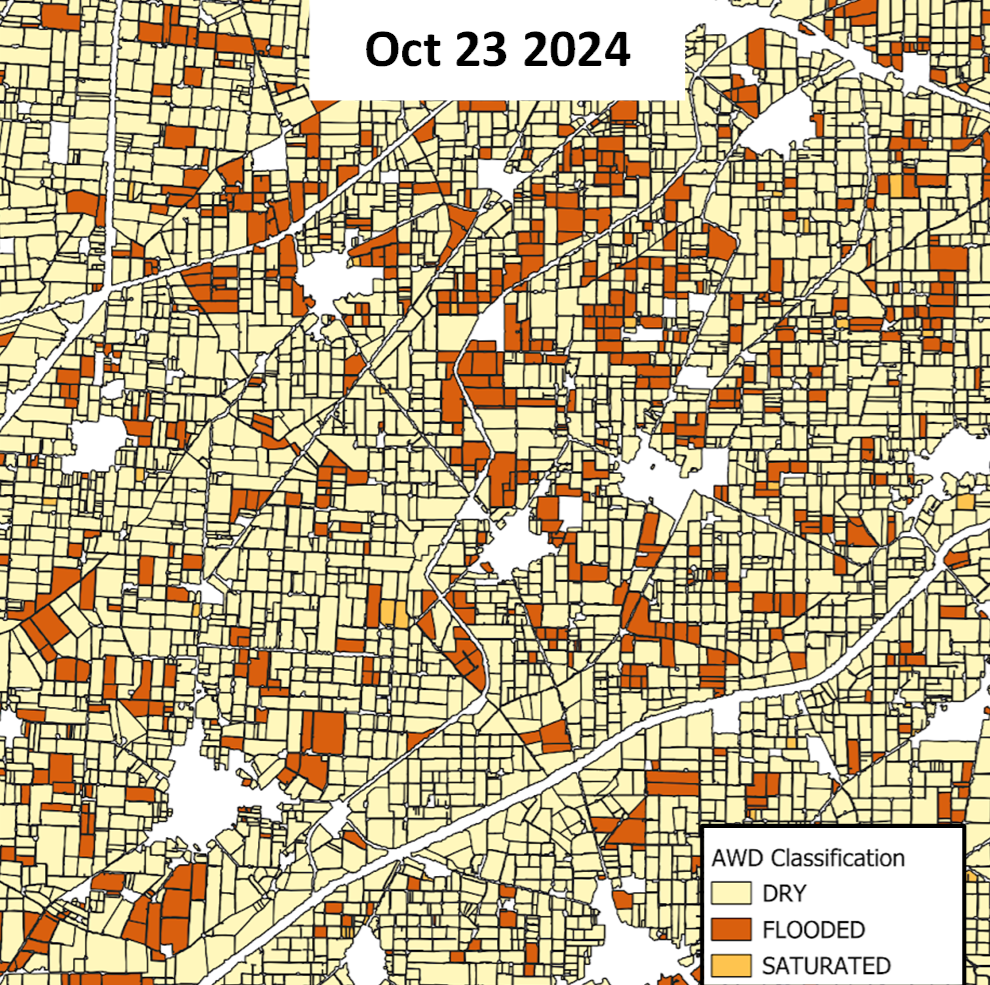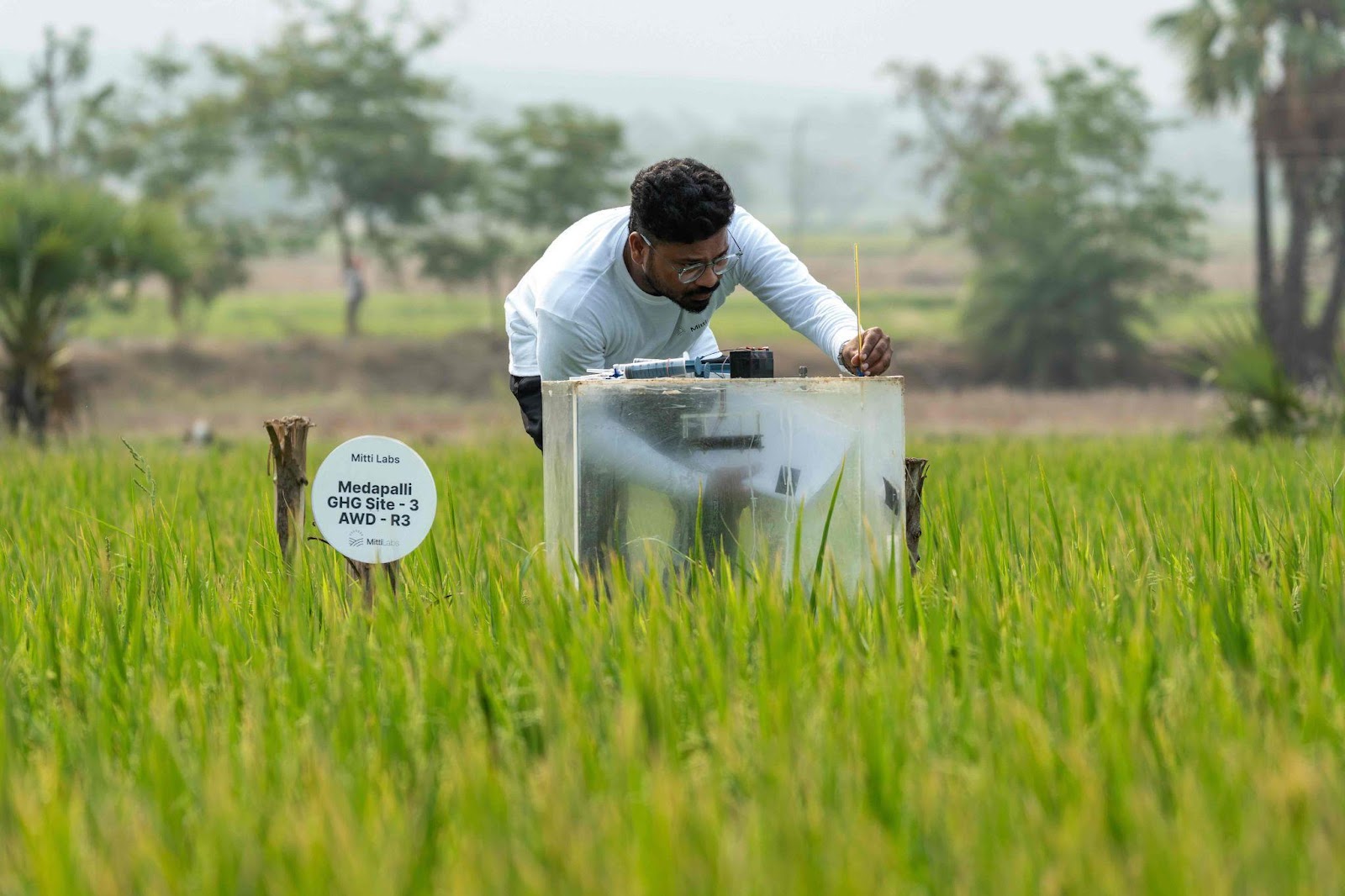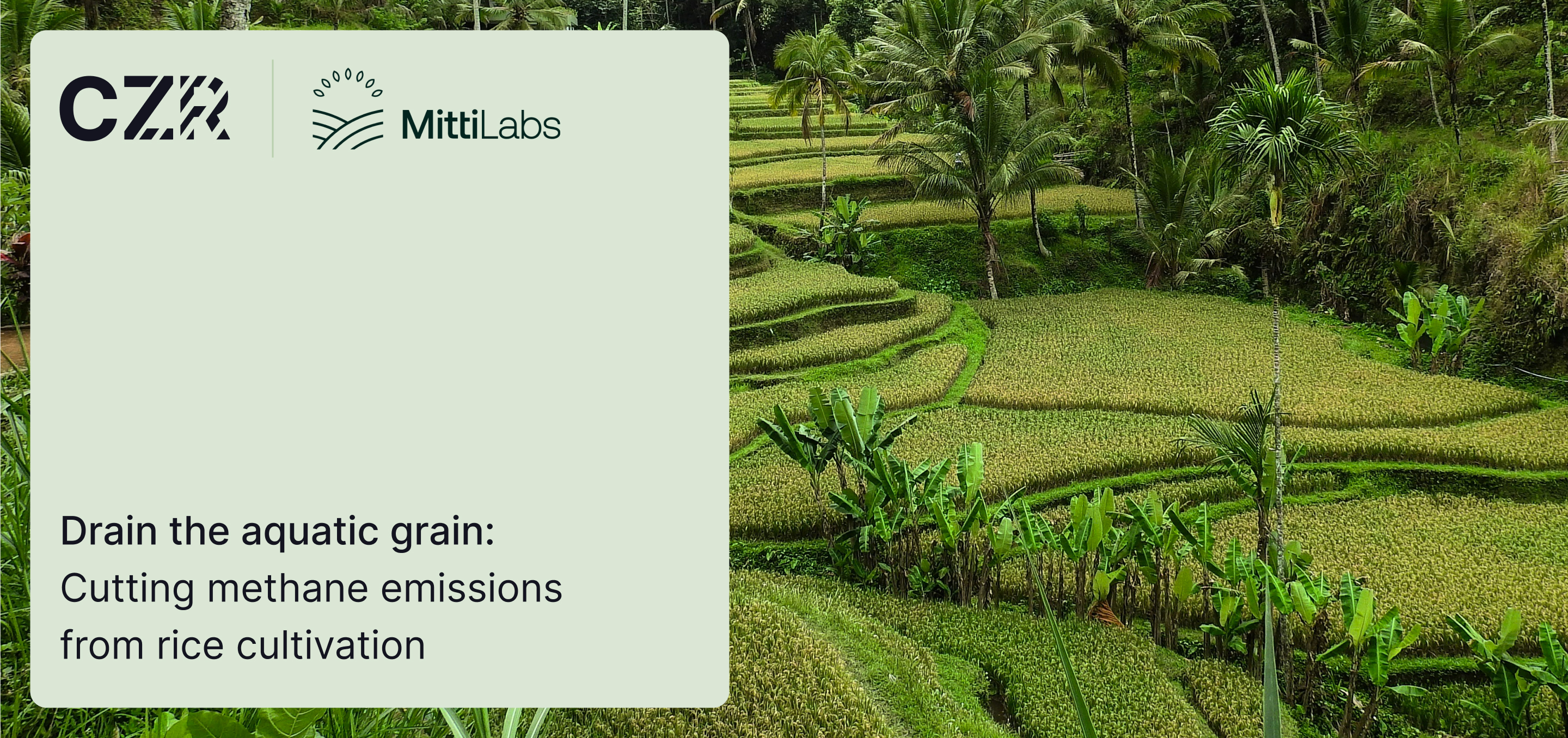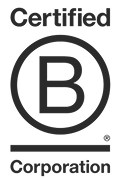When considering methane (CH4) reduction projects in the voluntary carbon market (VCM), most minds immediately jump to landfills, oil and gas infrastructure, or industrial leak detection. These sectors dominate the conversation around methane abatement, causing experts to overlook a major and underutilized climate lever: agriculture. Agriculture is the largest source of methane emissions, a greenhouse gas (GHG) 28 times more potent in warming the climate than CO₂. The primary contributors are enteric fermentation, the fermentation taking place in the digestive systems of ruminants, and rice cultivation.
According to the Oxford Principles for Net Zero Aligned Carbon Offsetting — a science-based framework that connects corporate climate action with long-term net zero goals and classifies carbon credits into five categories — rice methane reduction projects belong to the Oxford Category 1 of projects involving the avoidance of GHG emissions at the source. While Oxford Category 1 projects represent over 70 percent of issued carbon credits across CEEZER’s supported registries, only 0.36 percent of those come from rice cultivation projects. These projects thus remain widely underrepresented in the VCM despite their significant climate impact.
Rice: A global staple with a hidden climate impact
Rice is crucial to global food security as the nutritional cornerstone for over 3.5 billion people worldwide. However, its unique cultivation requirements present complex challenges in the face of climate change.
Rice cultivation has remained largely unchanged for millennia. As a semi-aquatic plant, rice thrives in flooded fields. Historically, this method capitalized on nutrient-rich sediment deposited by river flooding, while also suppressing weed growth and offering protection against infections. Today, farmers continue to deliberately flood their paddies, maintaining this ingrained tradition.
Prolonged waterlogging of rice fields creates ideal conditions for methane-producing microbes. As oxygen levels deplete beneath the standing water, these microbes feed on the field’s organic matter, releasing significant amounts of methane into the atmosphere.
As a result, rice cultivation accounts for 10.1 percent of total agricultural emissions. It also consumes approximately 40 percent of global freshwater resources. As global population growth increases the demand for rice —projected to grow by around 7 percent annually and double within the next decade— the urgency to address these environmental challenges intensifies.
The rice industry is at a critical juncture. Action is needed to support alternative rice cultivation practices with significantly reduced methane emissions and water usage. These solutions must also ensure food security and support the livelihoods of about 150 million smallholder farmers who depend on rice cultivation.
Alternative rice farming practices: A path to sustainability
Alternate Wetting and Drying (AWD), a component of System of Rice Intensification, stands at the forefront of these solutions. This technique involves strategic cycling between flooding and draining rice fields throughout the growing season. By breaking the continuous anaerobic conditions, AWD can reduce methane emissions by up to 50 percent significantly while preserving crop yields.
Other promising approaches include the broader System of Rice Intensification and Direct Seeded Rice (DSR). SRI combines AWD water management practices with optimized spacing and organic fertilization, resulting in a similar impact to AWD and improving food security. DSR, which eliminates the need for transplanting, can reduce water consumption by 25 percent, lower methane emissions, and decrease labor costs.
The VCM positions itself as a major financial catalyst to support this transition. Carbon finance provides financial incentives to overcome cultural, technical, economic, and policy-related barriers, ensuring project additionality. It reduces the perceived risk of crop yield loss from breaking with traditional flooding methods. Critically, it offsets the high upfront costs of water management tools, making AWD financially viable for smallholder farmers in regions lacking supportive policies.
A new generation of rice methane projects
Past experiences with rice methane reduction projects have led to a decline in public trust, primarily due to methodology shortcomings. Verra deactivated its Methane emission reduction by adjusted water management practice in rice cultivation (AMS-III.AU.) in March 2023 due to carbon accounting and monitoring concerns.
In response, more robust methodologies are being developed under leading carbon crediting programs like Verra and Gold Standard, in partnership with key stakeholders, like the International Rice Research Institute (IRRI).
Several companies are already transforming rice cultivation. CEEZER partners with high-quality project developers selected based on a rigorous risk assessment identifying project type specific risk drivers. One of CEEZER’s carbon project partners, Mitti Labs, is shaping a more sustainable rice industry through its advanced digital monitoring, reporting, and verification (dMRV) solution, combining real-time data collection through its digital tool Mitti Collect, satellite technology, artificial intelligence, and field measurement. The company provides financial and technical support to smallholder farmers in India who adopt sustainable agricultural practices, leveraging carbon credits as a funding mechanism.
Mitti Labs case study: Developing high-quality rice farming projects
Transitioning to sustainable practices demands a nuanced approach. Success depends on integrating scientifically sound farming practices with the practical realities faced by smallholder farmers.
CEEZER’s risk assessment, coupled with an interview with Xavier Laguarta, co-founder of Mitti Labs captured key elements which distinguish the project’s implementation:
Project developer expertise: Building trust with farmers through local partnerships is the fundamental to improving rice production. Mitti Labs emphasizes that "to these farmers, trust is more important than financial incentives," a finding mirrored by organizations working with developing communities. To address this, Mitti Labs collaborates closely with local NGOs, agricultural colleges and community leaders. Together, they have onboarded and trained over 30,000 farmers in the implementation of Climate-smart farming practices.
Carbon accounting and dMRV: Mitti Labs goes beyond the requirements of Gold Standard’s rice methane reduction methodology. They focus on grounding projects in robust scientific methods and have developed a best-in-class digital Monitoring, Reporting and Verification, specifically for rice. This satellite technology, combined with on-the-ground measurements of methane emissions, lets Mitti Labs monitor key aspects of the AWD practice, including the occurrence of dry down events (i.e. period during the rice cultivation cycle when the water level in a paddy field is intentionally allowed to drop). For carbon credit buyers, this technology enables full transparency on methane emission reduction at country-level scale, with field-level accuracy.


Social co-benefits: Training farmers and ensuring that changes in farming practices genuinely benefit and empower the farmers is key to ensuring project success. "We need to train the farmers. The last thing we want is performers to lose yield during their transition," says Xavier Laguarta. Farmers receive technical support tailored to local conditions, including soil type, water availability, rainfall patterns, historical yields, and pest pressure. They also receive an income boost of up to 20% through revenue share on the sale of carbon credits. Only when sustainability aligns with farmers' needs and aspirations can lasting change be achieved.
Environmental co-benefits: The environmental impacts of rice cultivation remain largely under recognized. These practices not only reduce methane emissions but deliver important co-benefits, including water conservation, climate resilience through an enhanced resistance to droughts, and yield maintenance or improvement. Crucially, the methane reductions occur immediately with each growing season, making these practices powerful tools for near-term climate mitigation. To scale those benefits, stimulating demand in the carbon market is essential.
Contribute to the future of rice farming through CEEZER
CEEZER partners with project developers who set a high bar for quality in carbon and methane reduction projects, leveraging strong farmer relationships and extensive data collection. While previously overshadowed by methodological flaws, the new generation of rice methane reduction projects positions itself at the intersection between climate science, agricultural innovation, and economic development.
CEEZER helps companies build high-quality vetted portfolios aligned with the Oxford Offsetting Principles. In the near to mid-term, projects like rice methane reduction play a vital role by delivering immediate, cost-effective emission cuts while delivering important co-benefits beyond carbon reduction. These interventions support short-term climate impact while laying the groundwork for a gradual shift toward permanent carbon removal solutions that offer durable storage and low risk of reversal. Diversified portfolios allow companies to balance investment risk factors while reaching an optimal price point and maximizing social and environmental impact. By leveraging CEEZER's expertise, you can discover and support projects that align with your sustainability goals, ensure meaningful impact, and enhance environmental leadership.
Contact CEEZER today to discuss our vetted selection of high-quality projects that meet your needs.





